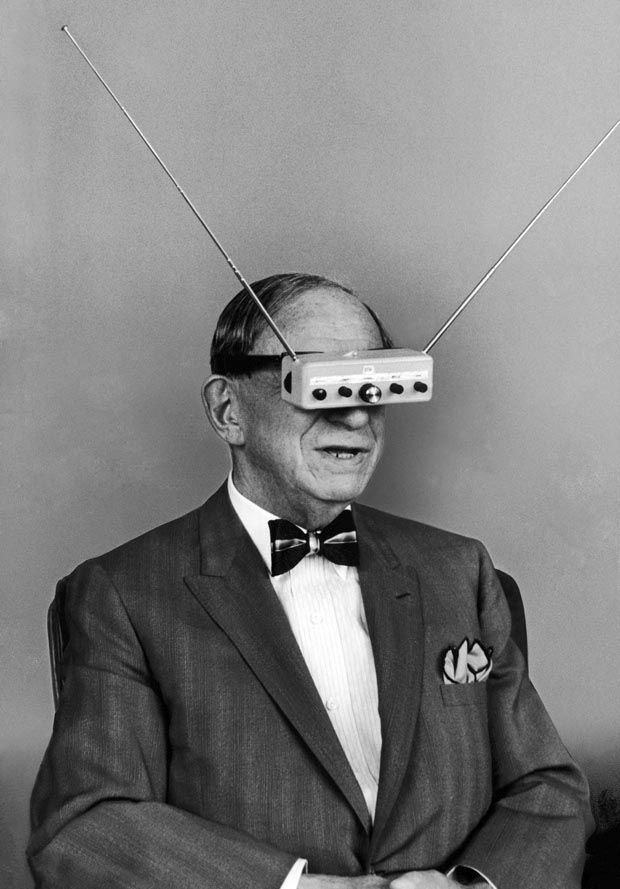Evan Ackerman
IEEE Spectrum
Hugo Gernsback believed millions yearned for his 3D TV eyeglasses
Science fiction as we know it would not exist without Hugo Gernsback. He coined the term “science fiction” as the editor and publisher of Amazing Stories, the first magazine devoted to the burgeoning genre, which he launched in 1926. The Hugo Awards for science fiction and fantasy are named after him.
Gernsback was also an inventor whose many ideas included a “combined electric hair brush and comb,” a battery-powered handheld illuminated mirror, and a wax-impregnated fabric strip for removing excess hair. But his most arresting invention was probably his television eyeglasses [above]. A Life magazine profile of Gernsback in July 1963, when he was 78, described his “teleyeglasses”:
 |
||
| Photo: Alfred Eisenstaedt/The Life Picture Collection/ Getty Images |
||
He now invents only in broad outline, leaving the actual mechanics of the thing to others. His television eyeglasses – a device for which he feels millions yearn – constitute a case in point. When the idea for this handy, pocket-size portable TV set occurred to him in 1936, he was forced to dismiss it as impractical. But a few weeks ago, feeling that the electronics industry was catching up with his New Deal-era concepts, he orders some of his employees to build a mock-up.
The teleyeglasses weighed about 140 grams and were built around small cathode-ray tubes that ran on low-voltage current from tiny batteries. (The user faced no danger of being electrocuted, Gernsback promised.) Because there was a separate screen for each eye, it could display stereoscopic images – much like today’s 3D virtual-reality glasses. Noting the massive V-type antenna protruding from the teleyeglasses, Life described the effect as “neo-Martian.” To be fair, modern VR goggles are only slightly less geeky looking than Gernsback’s.
Over his long life, Gernsback promoted many other futuristic ideas that have since become a reality: radar, microfilm, telemedicine, computer matchmaking, wireless spectrum regulation, bone-conduction hearing aids, tape recorders, electronic newspapers, and personal health trackers. The world is still waiting on some of his notions, though, including lunar mining, orbital mirror arrays, and the teleportation of ham sandwiches.